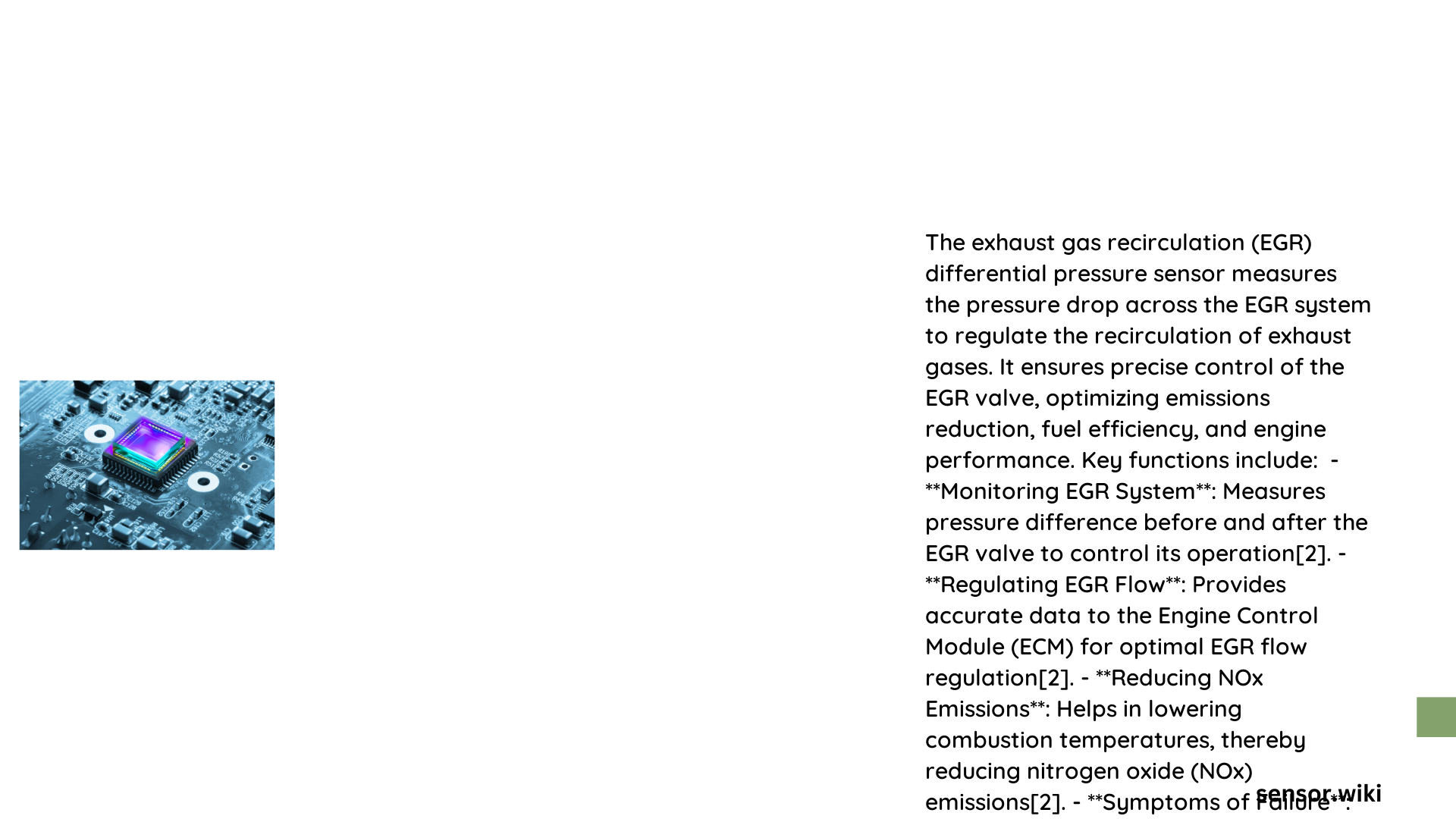The exhaust gas recirculation differential pressure sensor is a sophisticated automotive component designed to measure pressure variations in exhaust systems, enabling precise monitoring of exhaust gas recirculation (EGR) performance. By detecting minute pressure differences, this sensor plays a crucial role in reducing nitrogen oxide emissions, improving engine efficiency, and maintaining optimal combustion conditions across various vehicle operating environments.
What Makes Exhaust Gas Recirculation Differential Pressure Sensor Critical?
How Does the Sensor Contribute to Vehicle Performance?
The exhaust gas recirculation differential pressure sensor serves multiple critical functions in modern automotive systems:
- Emission Control
- Monitors exhaust gas recirculation rates
- Helps reduce nitrogen oxide (NOx) emissions
-
Ensures compliance with environmental regulations
-
Engine Efficiency
- Provides real-time pressure measurements
- Enables precise EGR valve control
- Optimizes combustion temperature and fuel efficiency
What Are the Technical Specifications?
| Parameter | Specification |
|---|---|
| Pressure Range | -10 kPa to 100 kPa |
| Accuracy | < 0.5% full scale |
| Response Time | < 1 ms |
| Operating Temperature | -40°C to +150°C |
| Power Supply | 5 ± 0.25V |
How Does the Sensor Operate?
The differential pressure sensor measures pressure drops between two critical points in the exhaust system, typically:
– Before and after diesel particulate filters
– Near exhaust gas recirculation loops
– Around turbocharger systems
Key Operational Principles
- Utilizes semiconductor strain gauge technology
- Converts mechanical pressure variations into electrical signals
- Transmits data to engine control unit (ECU) for real-time analysis
What Are Common Diagnostic Challenges?
Potential sensor issues include:
– Electrical connection failures
– Contamination from exhaust particulates
– Temperature-induced signal variations
– Mechanical stress and vibration impacts
How to Diagnose Sensor Problems?
Diagnostic Techniques:
– Multimeter resistance testing
– Signal output verification
– Visual inspection for physical damage
– Comparative pressure measurements
What Are Replacement Considerations?
When replacing an exhaust gas recirculation differential pressure sensor, consider:
– Exact vehicle model compatibility
– Sensor mounting orientation
– Electrical connector specifications
– Manufacturer warranty
– Professional installation recommendations
Advanced Technical Insights

Sensor Technology Evolution
Modern exhaust gas recirculation differential pressure sensors incorporate advanced microelectromechanical systems (MEMS) technology, enabling:
– Higher precision measurements
– Improved temperature compensation
– Reduced manufacturing costs
– Enhanced durability
Future Development Trends
- Integration with artificial intelligence
- Enhanced digital signal processing
- Miniaturization of sensor components
- Improved material science applications
Maintenance Best Practices
- Regular diagnostic scanning
- Clean sensor connections
- Protect from extreme environmental conditions
- Follow manufacturer-recommended replacement intervals
Conclusion
The exhaust gas recirculation differential pressure sensor represents a sophisticated technological solution in modern automotive engineering, bridging complex emission control requirements with precise mechanical measurement capabilities.
Expert Recommendations
- Always use OEM-recommended replacement parts
- Perform periodic professional diagnostics
- Understand sensor’s role in overall vehicle performance
Reference:
1. SAE International Technical Papers
2. Bosch Automotive Technology
3. Society of Automotive Engineers
